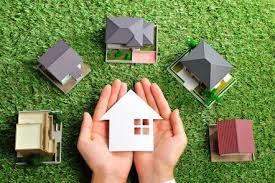In a world grappling with environmental challenges, the concept of eco-friendly housing has emerged as a beacon of hope for sustainable living. As our awareness of climate change and resource depletion grows, so does the urgency to adopt practices that minimize our ecological footprint. Eco-friendly housing offers a promising solution by integrating innovative design, renewable energy sources, and eco-conscious materials to create homes that are not just shelters, but also allies in the fight against environmental degradation.
The Rise of Eco-Friendly Housing
The growing concern over climate change and its repercussions has spurred a shift towards eco-friendly housing. Traditional construction methods often rely on materials and practices that are resource-intensive and contribute significantly to pollution. In contrast, eco-friendly housing emphasizes energy efficiency, waste reduction, and harmony with nature. From passive solar design to green roofs, these homes are redefining the way we build and inhabit our living spaces.

Key Features of Eco-Friendly Housing
Energy Efficiency
One of the cornerstones of eco-friendly housing is energy efficiency. These homes are designed to minimize energy consumption through features such as high-performance insulation, energy-efficient appliances, and strategic placement of windows to maximize natural light and ventilation. Additionally, renewable energy sources like solar panels and wind turbines are often integrated to further reduce reliance on fossil fuels.
Sustainable Materials
Eco-friendly housing prioritizes the use of sustainable materials that have minimal environmental impact. This includes reclaimed wood, recycled metal, bamboo, and non-toxic paints and finishes. By choosing materials that are responsibly sourced and have low embodied energy, homeowners can significantly reduce the carbon footprint of their homes.
Water Conservation
Another crucial aspect of eco-friendly housing is water conservation. Technologies such as low-flow fixtures, rainwater harvesting systems, and greywater recycling allow residents to minimize water usage and reduce strain on local water resources. Landscaping designs that incorporate native plants and drought-resistant species further contribute to water efficiency.
Natural Integration
Eco-friendly homes are often designed to seamlessly blend with their natural surroundings. This can involve incorporating natural landscaping features, such as green roofs and living walls, that enhance biodiversity and provide habitat for local wildlife. Additionally, passive design strategies leverage the sun’s path and prevailing winds to optimize thermal comfort and reduce the need for mechanical heating and cooling.

Benefits of Eco-Friendly Housing
The benefits of eco-friendly housing extend beyond environmental stewardship to encompass economic savings, improved health, and enhanced quality of life. By reducing energy and water consumption, homeowners can lower their utility bills and enjoy long-term cost savings. Furthermore, the use of non-toxic materials and improved indoor air quality contribute to healthier living environments, reducing the risk of respiratory ailments and other health issues.
Challenges and Opportunities
While eco-friendly housing holds immense potential, it is not without its challenges. The upfront cost of implementing sustainable features can be prohibitive for some homeowners, despite the long-term savings they offer. Additionally, navigating building codes and regulations can pose obstacles to widespread adoption. However, initiatives such as green building certifications and financial incentives for sustainable construction are helping to overcome these barriers and make eco-friendly housing more accessible.
Conclusion
Eco-friendly housing represents a paradigm shift in how we conceptualize and build our homes. By prioritizing sustainability, energy efficiency, and environmental responsibility, these homes offer a path towards a more resilient and harmonious future. As individuals, communities, and governments increasingly recognize the importance of mitigating climate change and preserving our natural resources, eco-friendly housing is poised to play a central role in shaping the way we live and thrive on this planet. Embracing sustainable living solutions today is not just an investment in our future, but a commitment to the well-being of generations to come.








Comments 1